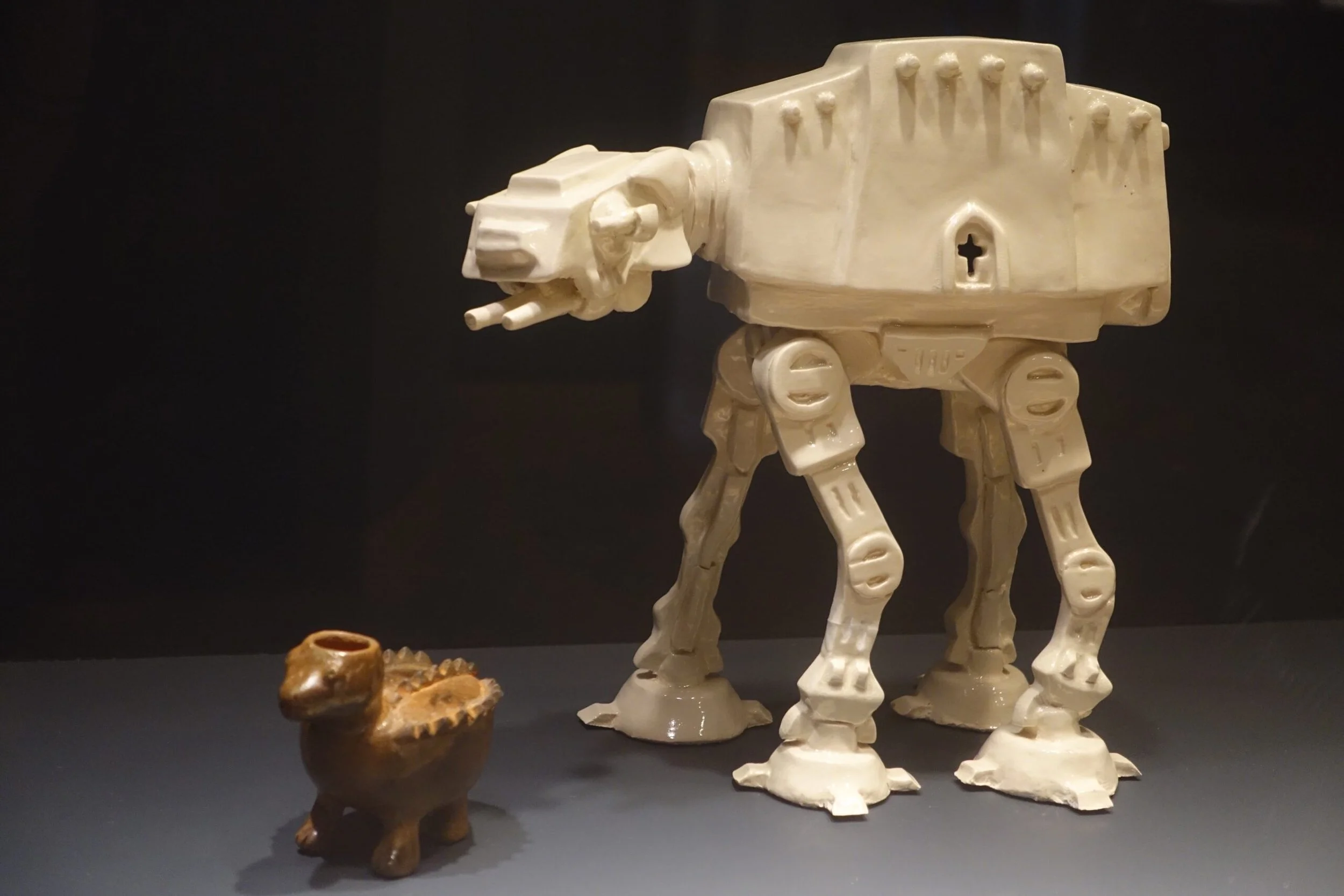Native Art Space at MIA
Putting Native Knowledge First
Museums often fail the art when we collapse Native art into Western categories of thinking and belonging. Traditional museum interpretation—“museum speak”—leans toward presenting knowledge in an authoritative, academic, and anonymous way. Descriptions of formal qualities, composition, and the ethnographic significance of an artwork often silence Native knowledge, voice, and presence. Instead of writing from the analytical, clinical, and distant lens often found in the museum context, we’ve embraced a shift to the emotive, the kinetic, and the personal in the reinstalled galleries.
Native art contains and is imbued with ways of being and thinking, an extension of the creators’ spirit. In their work and through their own words, Indigenous artists share perspectives with Mia visitors, including about process, inspiration, historic events, and community-specific values and thought. These voices reveal a generosity beyond compare.
We hope you enjoy this new direction we are taking together.
Shifting museum space to Native place
APRIL 19, 2022
By Juan Lucero and Jill Ahlberg Yohe //
Recently, we changed Mia’s Native Art galleries. In our hearts and minds, as curators during this time of reckoning for museums all over the globe, we knew that our responsibility was to upend the typical narratives. We set out for nothing less. Though the change may have been small in terms of scale—reinstalling three galleries—we seized the opportunity to pivot perspectives, glean new insights, and revel in the stories and experiences of contemporary Native artists and their ancestors at Mia.
How did we accomplish this seismic shift? By rejecting the theoretical and the abstract, and by following Indigenous modes of curation and practice that honor respect, reciprocity, collaboration, and care.
Contemporary Art Everywhere
Visitors who enter the second-floor Native art galleries from the wall of windows overlooking Washburn-Fair Oaks Park encounter something entirely new: a gallery dedicated to contemporary Native art. For instance, a punching bag by Jeffrey Gibson (Choctaw-Cherokee) dangles from the ceiling as though dressed in blinged-out powwow regalia; its metal jingles and vibrant gem-color beads draw you in. Media of all kinds—ceramics, beadwork, textiles, sculpture, jewelry, paintings, works on paper—entice you to look closer. The art breathes new life into a place, and provides space for visitors to reflect: What’s different here? What’s going on here?
In two other galleries, contemporary and historic works juxtapose with spirits in conversation, sharing stories and revealing continuous narrative threads: of individual and collective histories, struggles, beauty, and fortitude.
Untold truths and unseen narratives also emerge, including the histories of museums’ Native art collections, couture and connection across the Plains in the 1800s, and the persistence of the Dakhóta Homeland despite the devastating costs of attempted erasures (see Alex Buffalohead’s blog story “Shifting the Perspective”).
LISTEN
Juan Lucero and Jill Ahlberg Yohe in Conversation
LISTEN Juan Lucero and Jill Ahlberg Yohe in Conversation
WHO
MIA’s Native Art Galleries.
WHERE
WHEN
Open now. Free admission every day Sues-Sun
WHY
It was time for a change. We knew it. The museum knew it. The world knew it.












